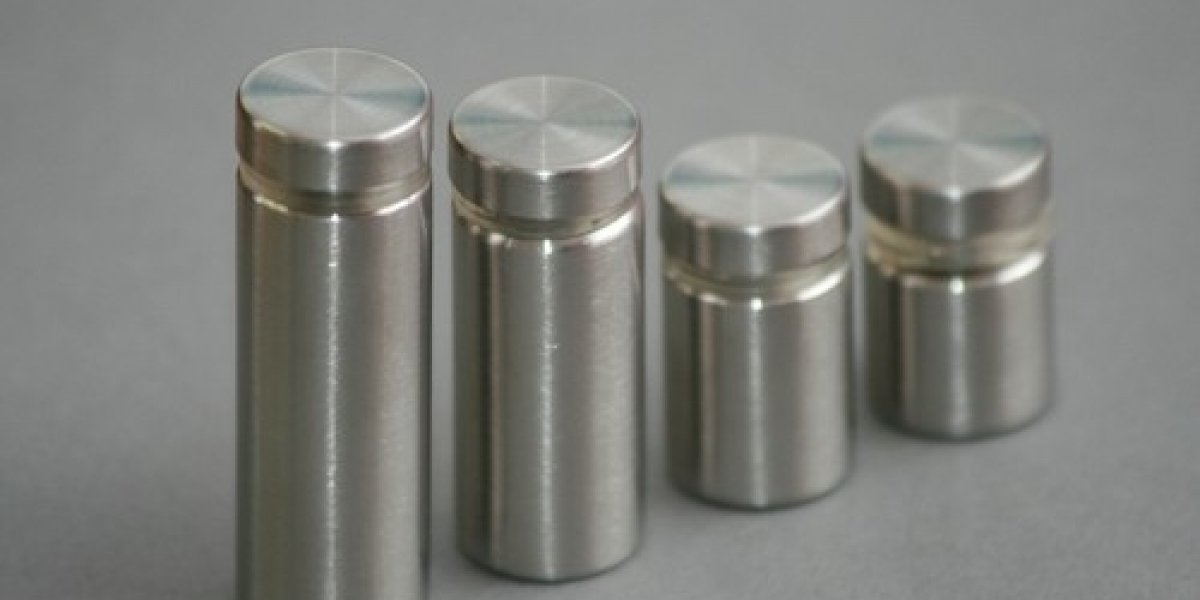In today’s architectural and interior design world, aesthetics meet functionality through innovative hardware solutions. One such component that has transformed the way glass installations are designed and mounted is the glass standoff. Known for their sleek appearance, durability, and versatility, glass standoffs are widely used in commercial, residential, and retail environments. This blog explores everything you need to know about glass standoffs, including their types, uses, materials, and benefits.
What Are Glass Standoffs?
Glass standoffs are cylindrical fasteners used to mount glass panels, signage, or decorative elements at a fixed distance from a surface such as a wall or partition. Typically made from stainless steel, brass, or aluminium, they hold the glass securely while giving a “floating” appearance that enhances the visual appeal of the space.
These fittings are designed to provide structural stability along with a clean, modern look, making them a popular choice among architects, interior designers, and builders. Whether used for office partitions, railing systems, or signage displays, glass standoffs offer both strength and style.
Types of Glass Standoffs
There are various types of glass standoffs available in the market, depending on their design, application, and material. The most common types include:
Through Standoffs:
These are mounted through the glass panel with a hole, offering strong and permanent installation for glass walls and railings.Edge Grip Standoffs:
Ideal for situations where drilling into the glass is not preferred. These standoffs grip the glass edges securely without compromising its integrity.Adjustable Standoffs:
Allow height or distance adjustments to ensure precision alignment during installation.Decorative Standoffs:
Designed with aesthetic appeal in mind, available in brushed, polished, or anodised finishes for premium interior projects.
Applications of Glass Standoffs
The versatility of glass standoffs makes them suitable for a wide range of architectural and design applications, including:
Glass Railings: Provide support and spacing in balcony and staircase railings, offering safety without obstructing the view.
Wall-Mounted Signage: Commonly used in corporate offices, retail stores, and hotels for installing glass signs and logos.
Display Panels: Used in galleries, showrooms, and exhibitions for mounting glass displays and artworks.
Office Partitions: Offer a clean and modern way to separate spaces while maintaining openness and light flow.
Architectural Glazing: Ideal for facades and decorative glass installations in modern buildings.
Materials and Finishes
The performance and aesthetics of glass standoffs depend largely on the material and finish. The most widely used materials include:
Stainless Steel: Offers corrosion resistance and strength, suitable for both indoor and outdoor applications.
Brass: Provides a premium finish and is ideal for luxury interiors.
Aluminium: Lightweight and cost-effective, perfect for less demanding applications.
Finishes can range from polished, brushed, satin, or anodised, depending on the design preference and environment.
Advantages of Using Glass Standoffs
Modern Aesthetic Appeal:
Glass standoffs provide a sleek and elegant appearance that complements modern interiors.Enhanced Stability:
Despite their minimal look, standoffs offer strong mechanical support for glass installations.Easy Maintenance:
Their corrosion-resistant materials ensure durability with minimal upkeep.Versatile Application:
Suitable for signage, partitions, railings, and more — a true multi-purpose fitting.Improved Light Transmission:
By allowing glass panels to float away from the wall, they maintain natural light flow, enhancing brightness and openness in the space.
Installation Tips for Glass Standoffs
To ensure safe and precise installation:
Always use high-quality standoffs rated for the intended load and environment.
Drill holes in tempered glass with accurate measurements to avoid stress or cracking.
Use rubber gaskets or spacers between the standoff and the glass to prevent damage.
Ensure even weight distribution across all standoffs during installation.
Conclusion
Glass standoffs are much more than just decorative fixtures — they are a fusion of functionality, safety, and style. Their ability to hold glass securely while maintaining a clean, floating appearance makes them indispensable in modern architecture and interior design. Whether you are upgrading office interiors, mounting signage, or designing a glass façade, choosing the right standoffs ensures both performance and visual impact. As the demand for minimalist and contemporary spaces continues to grow, glass standoffs remain the go-to solution for elegant and reliable installations.








